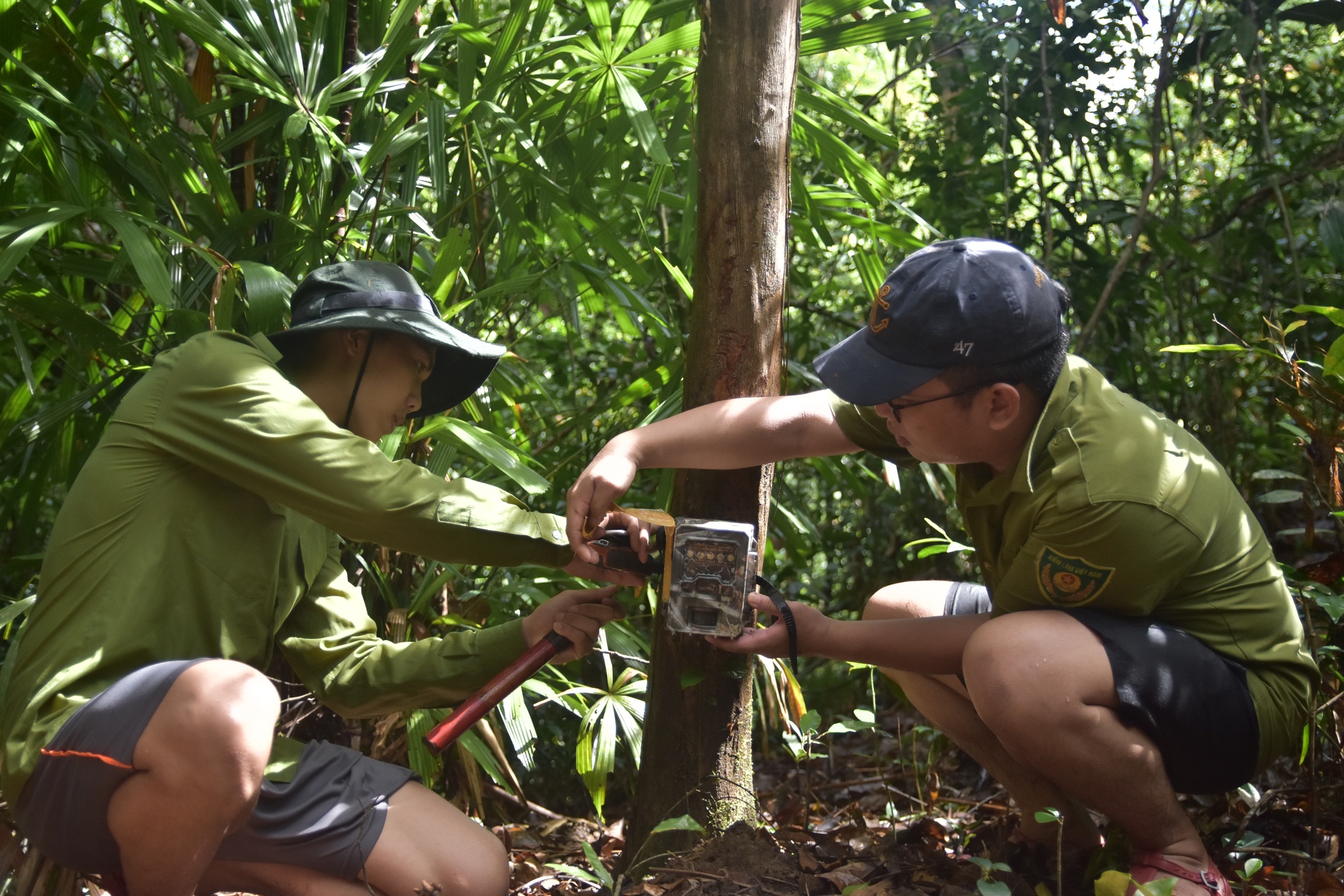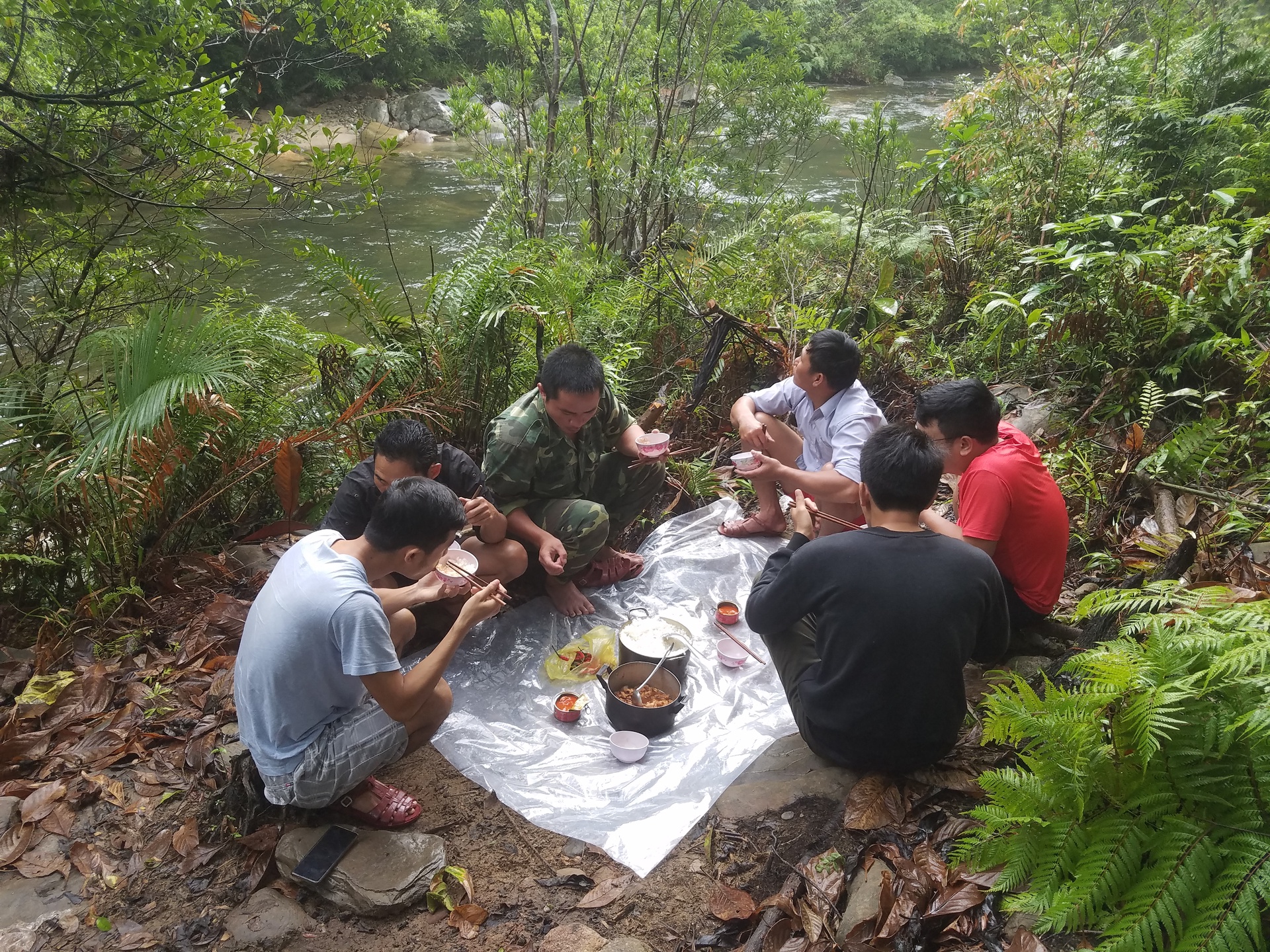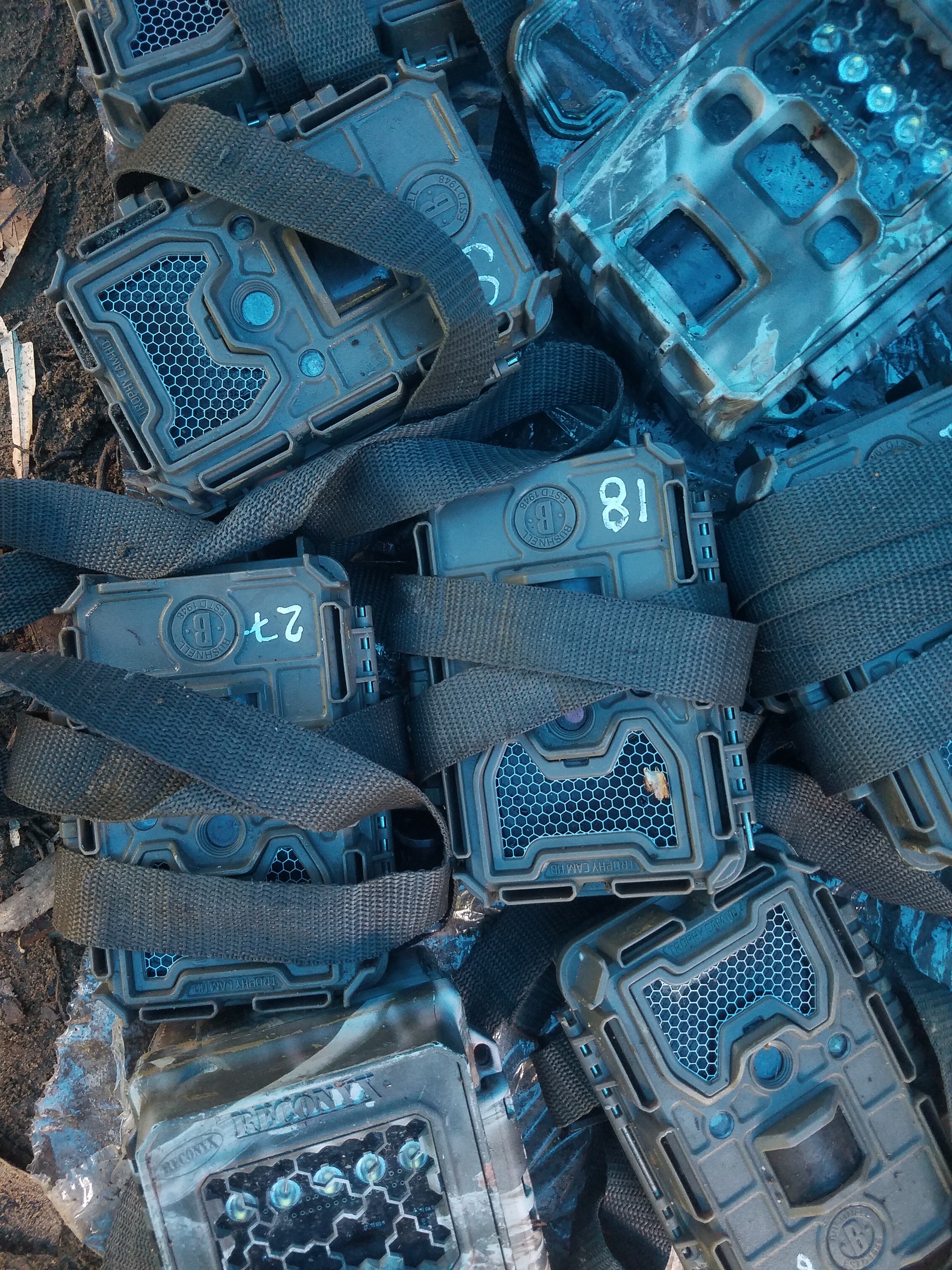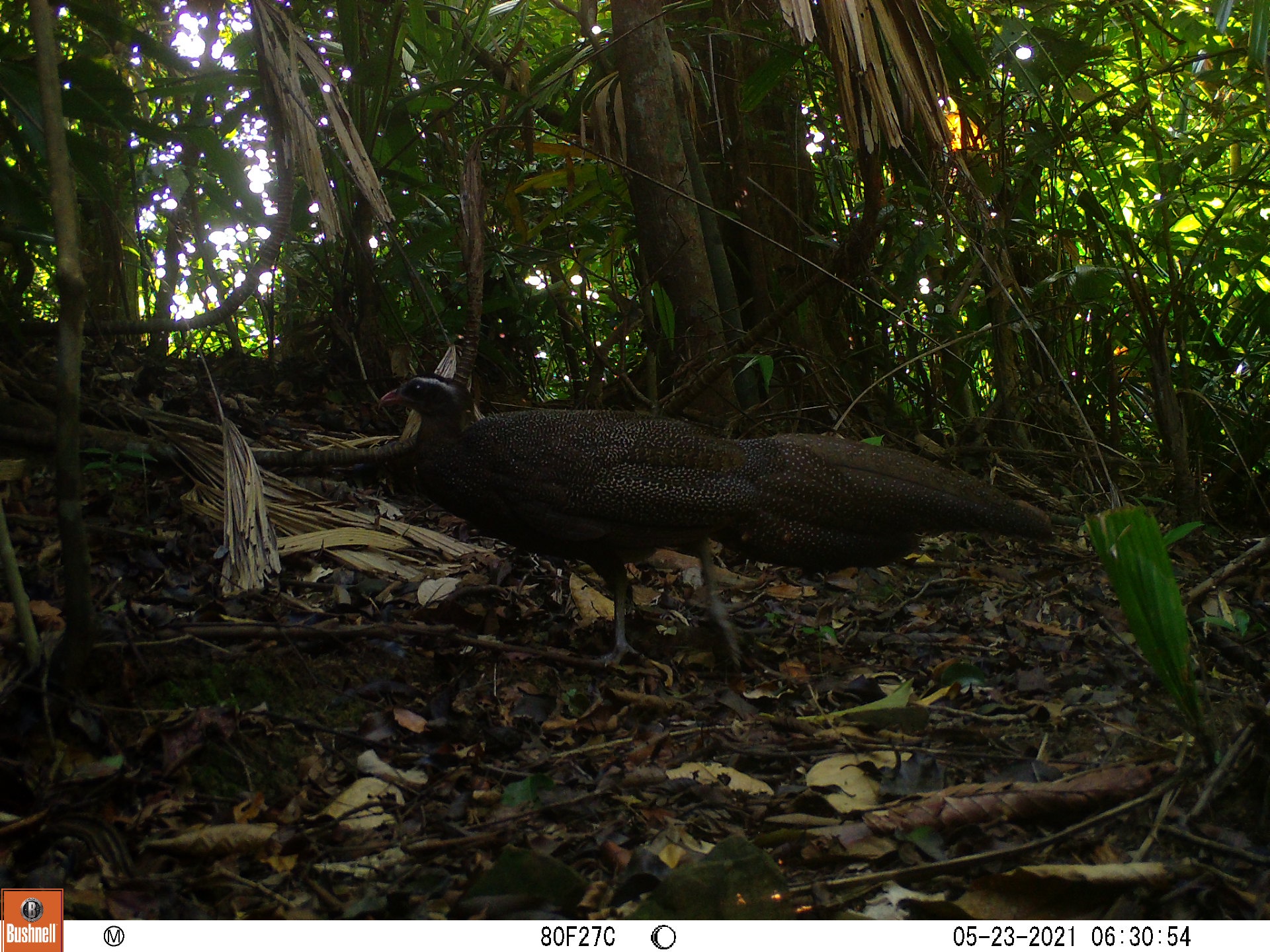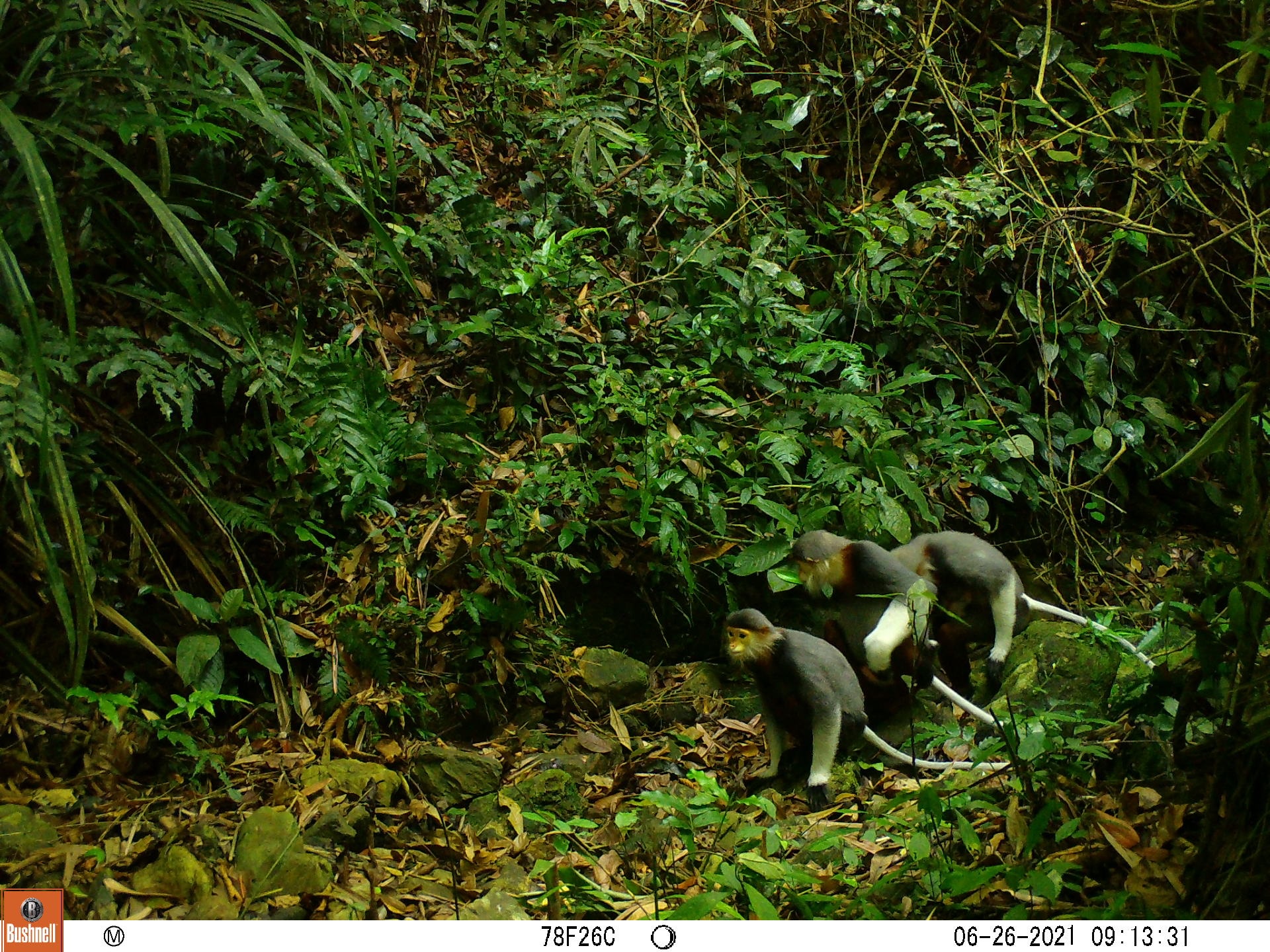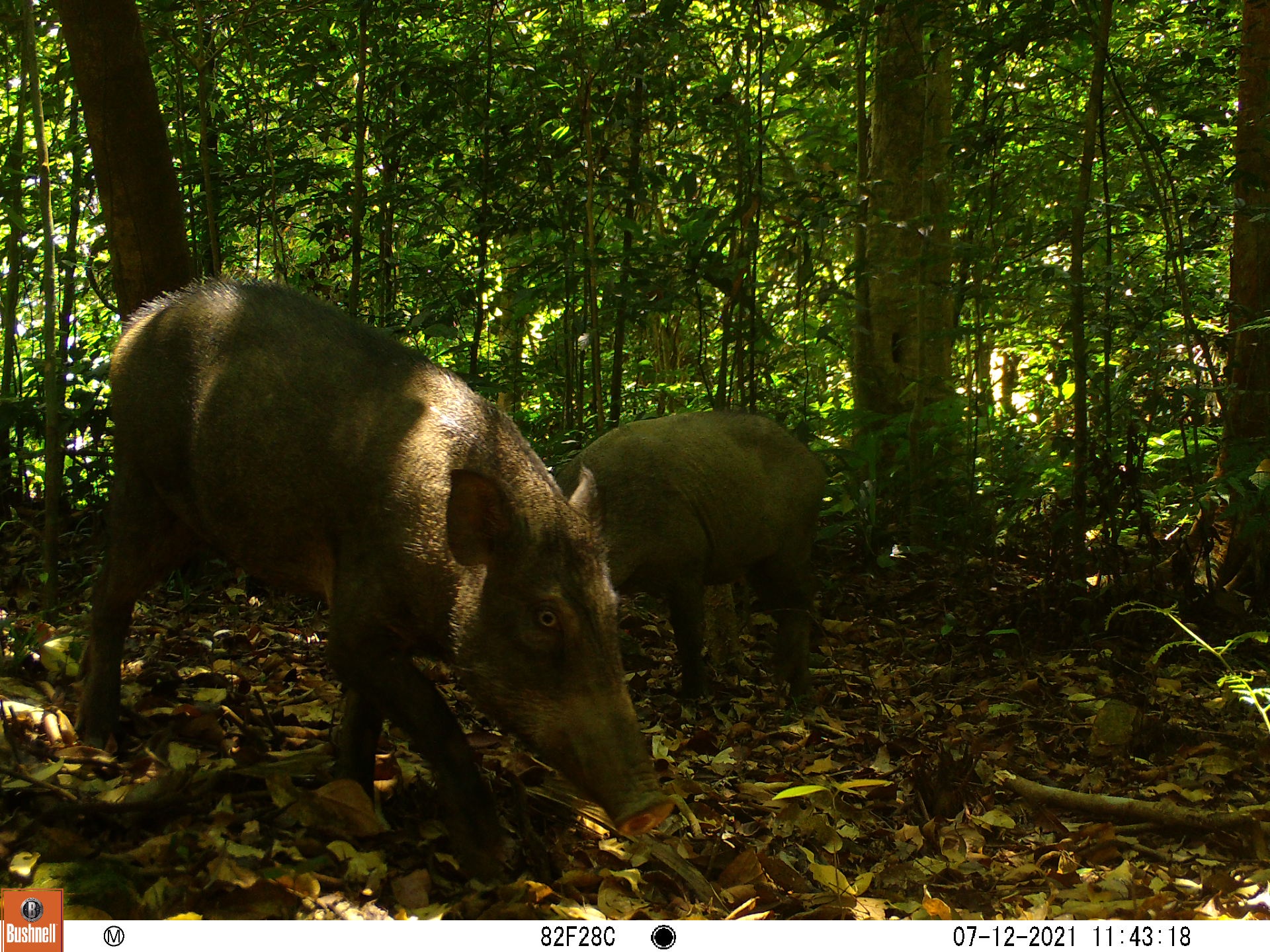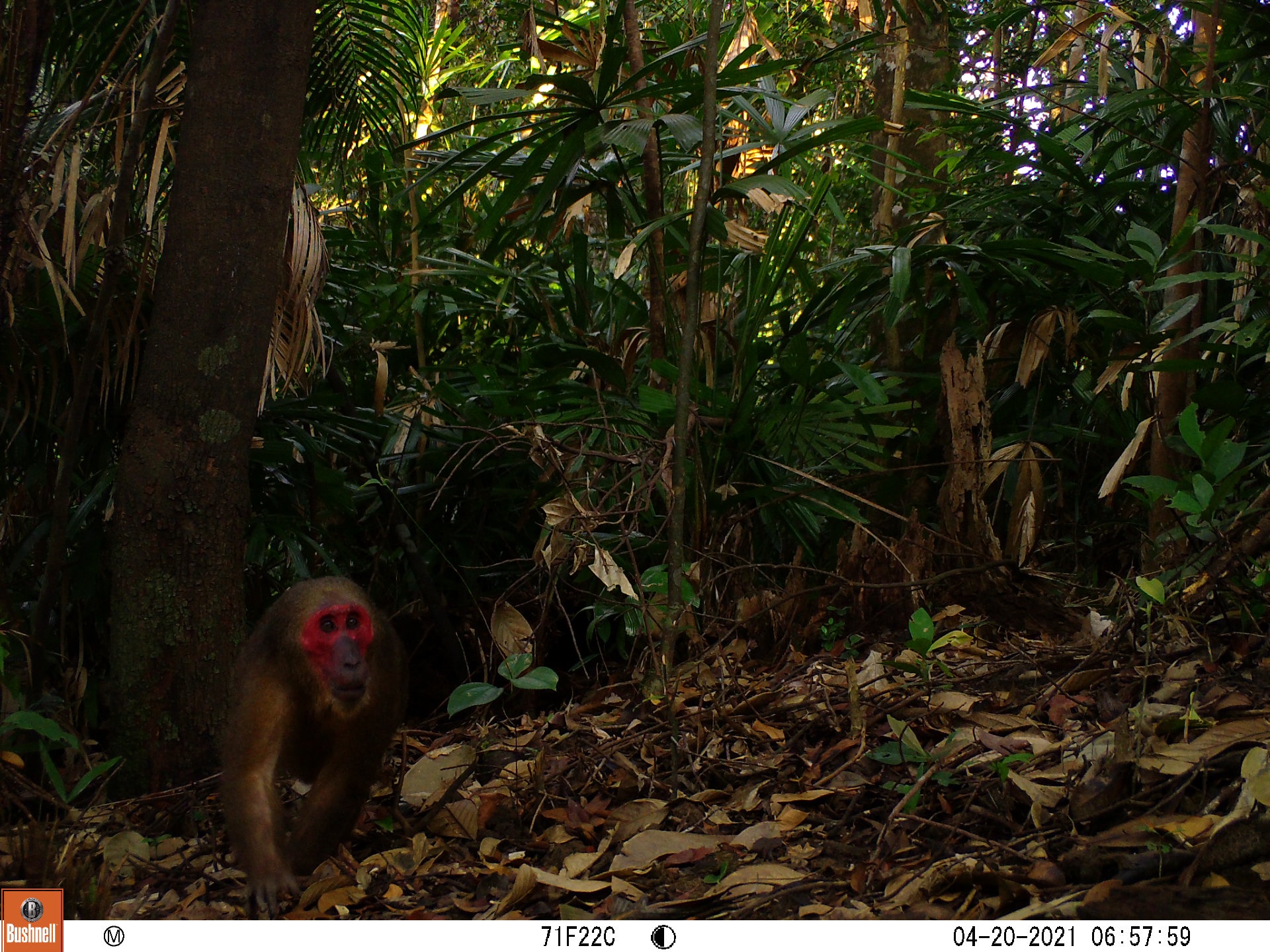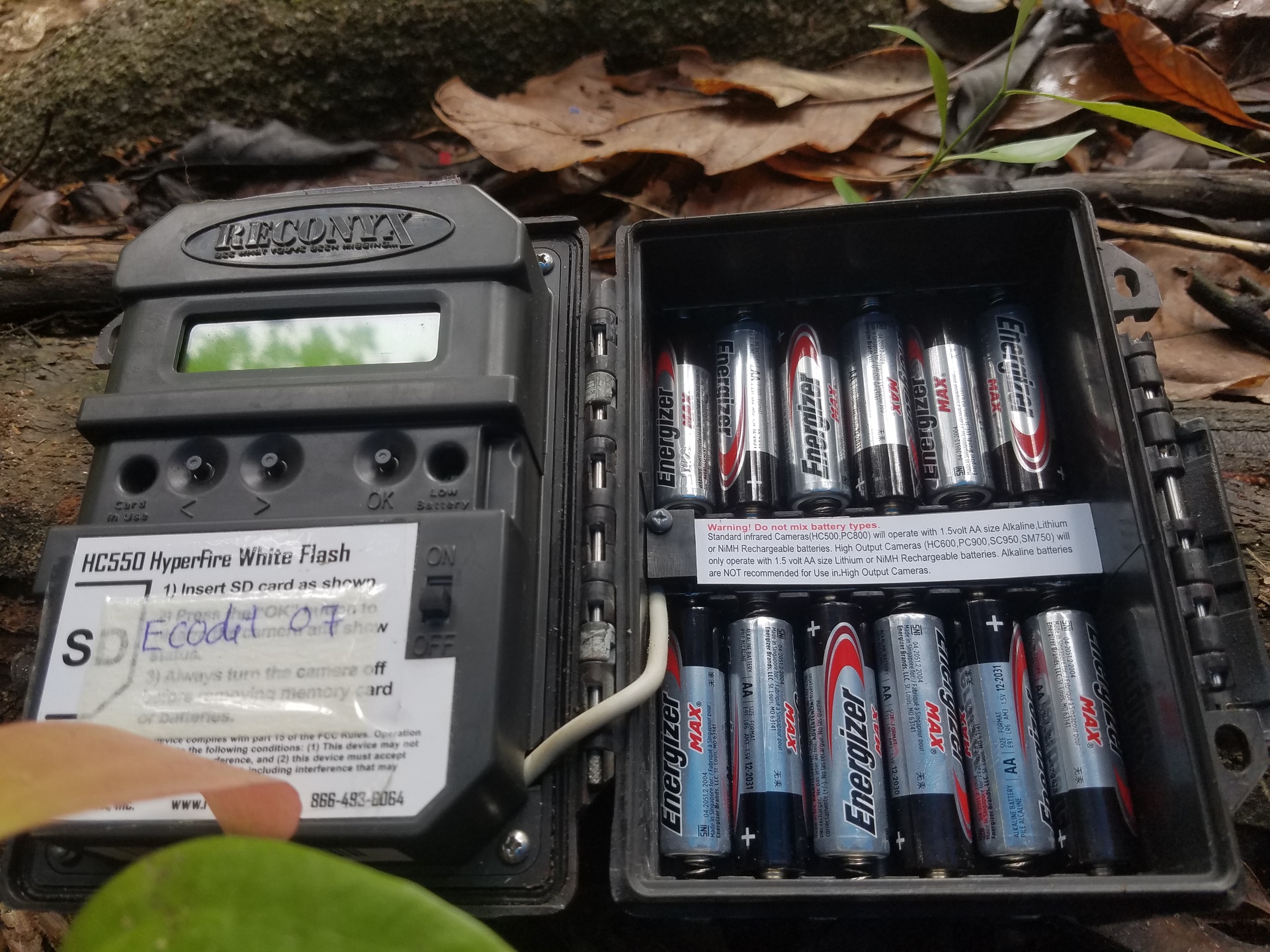Though Vietnam’s park rangers have no qualms about braving some of the country’s harshest terrains in order to protect wildlife, networks of camera traps deployed throughout nature reserves have absolutely increased their ability to observe, study, and protect the most cherished resource – Mother Nature.
In mid-September, six park rangers from Phong Dien Animal Sanctuary set off into the jungles of Thua Thien-Hue Province in central Vietnam to set camera traps – digital cameras which detect motion or body heat – that would allow them to protect and study the local wildlife.
Led by 27-year-old Hoang Tan Phat, the group began their journey with a one-kilometer motorbike ride from the Phong Dien Animal Sanctuary park ranger kiosk to the edge of the forest.
From there, they hiked 25 kilometers through lush forests and over several small waterways until they reached a place for setting up a night camp.
|
|
| A team of six people crossed many streams on the way to their campsite in Thua Thien-Hue Province, Vietnam. |
Three of the six team members were part-time employees of the reserve, tasked with navigating the group through the forest and doing most of the heavy lifting.
The other three – all full-time technical experts – joined the trip to help set a network of camera traps across the reserve. These experts included Hoang Tan Phat, Nguyen Van Vien, and Tran Van Nhat.
At just 23 years old, Nhat may have been the youngest member of the group, but he had already been on four trips to set camera traps throughout the forest.
This trip, however, was special for Nhat because it fell on his birthday.
About eight kilometers into the group’s journey, two members of the team raced ahead to set up the camp and prepare dinner.
|
|
| The park rangers charged with setting the camera traps at Phong Dien Animal Sanctuary in Thua Thien-Hue Province, Vietnam relax with a simple lunch in the middle of nature. |
The rest traveled a bit slower, stopping often to lay camera traps. Still, even at the slower pace, the group did not waste any time dilly-dallying.
“We had to be quick in case it rained. That would have made the trip very dangerous,” Phat said.
That evening, they reached their campsite – a small hill shaded by lush trees and flanked by a stream.
“It was a great spot to camp because we are sheltered from the rain,” Phat explained.
Harsh forest rains
The next day, it rained until 3:00 pm, yet the team worked through the rough weather, using a specialized device to locate previously placed camera tracks.
|
|
| Camera traps at Phong Dien Animal Sanctuary in Thua Thien-Hue Province, Vietnam |
Their mission took them over massive rocks and fallen trees, with one member of the group clearing the way for the others using a small hatchet.
The group found the first two cameras they were looking for quite easily. It was the third camera that forced them to descend a steep hill covered with large tree trunks, bushes, and branches.
For nearly an hour, the group braved the hill and strong winds to reach the third camera, but the success did not mean they could let down their guard on the treacherous path.
“We may have to be very careful during the rainy season. If we’re not, we could pay dearly,” Vien said shortly after slipping and nearly tumbling down a steep hill.
According to park rangers, placing a camera trap is considerably more difficult than removing one, especially when it comes to picking the right spot.
|
|
| This Vietnamese crested argus (Rheinardia ocellata) was captured at 6:30 am on May 23, 2021 in this photo supplied by the Phong Dien Animal Sanctuary management in Thua Thien-Hue Province, Vietnam. |
Sometimes, it takes as many as four tires before they find the perfect location to capture images of the specifical animals they are targeting.
“There are times we’re out here in the forest for three or four days trying to make sure everything is perfect,” Vien said.
Happy fruits
The 41,000-hectare Phong Dien Animal Sanctuary was established on November 13, 2002 and is considered crucial to the protection of the area’s unique bird species, including the Vietnamese pheasant, or Lophura edwardsi.
The first camera traps were laid in the sanctuary on June 5, 2016 and produced 2,306 photographs of 18 species of mammals and nine species of birds during their first 43 days in operation.
|
|
| The red-shanked douc – an endangered species in Vietnam – was recorded in 2017. |
Camera traps play a vital role in maintaining biodiversity and developing a better understanding of the populations of various animal species in national parks and reserves.
Using this information, park rangers can develop appropriate measures to manage and protect the wildlife in their care.
In the past, environmentalists and park rangers depended on footprints, feces, and other observable evidence to better understand the species under their supervision.
Camera traps have eased the burden of these often ineffective and time-consuming methods.
The 63 camera traps in Phong Dien Animal Sanctuary are funded by the World Wildlife Fund of Vietnam under the German-sponsored CARBI project.
The cameras used in the traps primarily target land animals.
For birds and primates, sound-based tracking devices are utilized, including the analysis of singing, hoots, and even food trails.
|
|
| Two wild boars were captured in 2021. |
The technical experts that set the traps need a sound understanding of each and every species they hope to capture in order to pinpoint the best place to hide the cameras.
Reserves in Vietnam where camera traps are installed report vast improvements in keeping a record of birds and mammals.
Among the first photographs taken with these hidden cameras was a picture of a large-spotted civet – one of the rarest small-sized carnivores in the world.
The large-spotted civet was considered highly endangered by the International Union for Conservation of Nature in June 2016 and experts even thought that it had become extinct in China and Vietnam.
On March 12, 2016, 56 camera traps were installed in various areas of Phong My Ward in Phong Dien Animal Sanctuary and captured thousands of photos in just two months.
|
|
| A red-faced monkey was captured in 2021. |
The animals recorded included wild boars, porcupines, red-shanked doucs, lemurs, and even an endangered Truong Son muntjac – a species which had not been spotted in Vietnam since 1997.
“Camera traps usually capture one member of a species at first, but later record an entire group,” said Phat.
“It is not just a joy for us, but also an opportunity to learn about the animals and to keep them safe.”
The September trip to remove the cameras was the last one in 2021.
The next trip will take place in April 2022.
Each camera trap works with a set of either 12 or 20 batteries. They usually last for about two months before they need to be replaced.
The park rangers at Phong Dien take two trips each year to substitute the cameras.
|
|
| The Truong Son muntjac, or Annamite muntjac (Muntiacus truongsonensis), was captured on camera on March 12, 2021 in this photo supplied by the Phong Dien Animal Sanctuary management in Thua Thien-Hue Province, Vietnam. |
|
|
| The camera traps operate on battery power. |
Like us on Facebook or follow us on Twitter to get the latest news about Vietnam!



